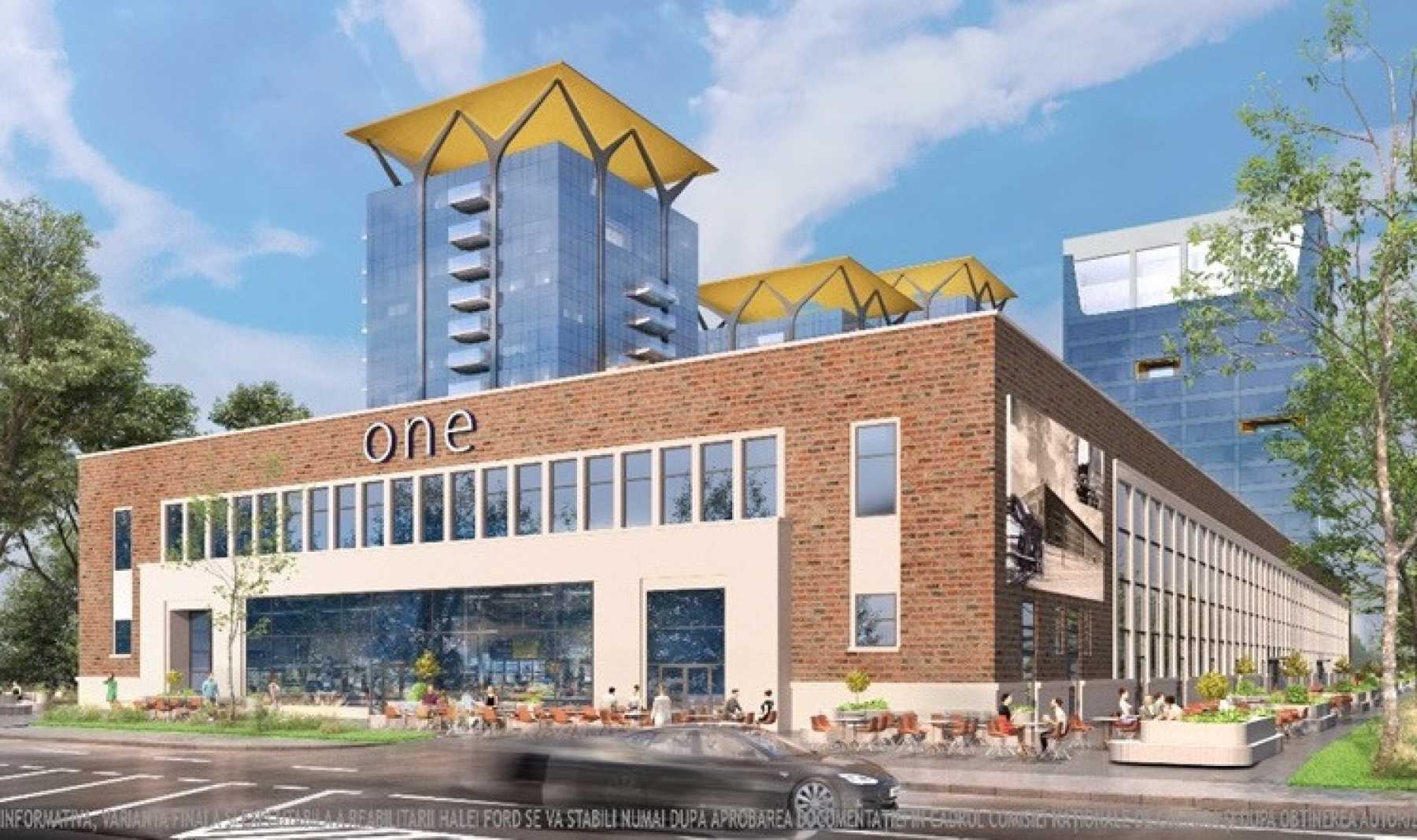In the heart of Floreasca neighbourhood in Bucharest, an ambitious revitalization project is transforming the urban landscape, bringing back to life a symbol of Romania's industrial history – the Ford Hall. The developer, One United Properties, has taken on this historic monument and embarked on a large-scale urban regeneration project, investing 90 million euros to transform the hall into a modern and attractive ensemble with commercial functions.
In an interview with Hotnews, Professor Emeritus Dr. Architect Dan Șerban emphasizes the importance of restoring the former Ford factory and reintegrating it into the commercial and public circuit. The monument, classified as Class A, represents a peak in interwar industrial architecture, and the courage to acquire and restore it is a particularly significant gesture for the community.
With its new name, One Gallery becomes a polarizing centre for the neighbourhood and the city, bringing innovative functions such as coworking spaces and a concept store:
”The concept is defined by very interesting ideas, aiming to transform the Ford Hall objective into a polarizing centre, defined by the concept of coworking spaces, a concept store, with elements of a mall, but not in the classical sense. The interdependence of these two functions is special and turns it into an important attraction for both the general public and the office real estate segment.”
The restoration and transformation of the former Ford factory represent not only one of the largest projects of this kind in the country but also a significant architectural challenge. Preserving heritage elements and adapting them to contemporary standards require a careful and courageous approach.
”There is very little experience in transforming buildings of such size, both in terms of surface area and volume, into a significant element of public attraction and investment. Certainly, the challenges are immense for both the architect and the builder, primarily because working on monuments is full of unforeseen circumstances. Projects, in their initial authorization form, represent a certain attitude that, during actual development and execution, changes based on the elements found on-site. Often, these are hidden and/or unforeseen, making the challenge of resolving them correctly even more pronounced. It is, of course, primarily about preserving heritage elements that give meaning to the building and its historical function and translating them into the contemporary context”,
says Professor Emeritus Dr. Architect Dan Șerban.
The inclusion of sustainable elements, such as solar panels on the roof, contributes to transforming the historic building into a modern and sustainable landmark.
The economic impact of restoring these historical monuments in Bucharest is remarkable, bringing benefits not only in financial terms but also in educating the public about the value of historical architecture. In the case of One Floreasca City, which includes the restoration of the Ford Hall, the community in Floreasca neighborhood and the entire city enjoy a new urban attraction, contributing to the enhancement of aesthetics and the quality of urban life.
”The Ford Hall is not only an extremely important architectural monument with exceptional value but is also strategically positioned in terms of Bucharest's key centres. In this regard, Floreasca neighbourhood has been enriched by the urban complex created by One United Properties, with high-quality residential and office tower blocks that already define the respective area. The importance of this pole in Floreasca neighbourhood, architecturally reconfigured, its visual influence, the perception of adjacent green areas, simultaneously serving as a social polarizing element for the neighbourhood and beyond, will bring significant benefits both for the neighbourhood and for Bucharest. It is an example of urban development with a different functional and volumetric approach, ultimately leading to strong attractiveness for this landmark.”
This restoration and transformation project demonstrates that private sector involvement in revitalizing historical monuments can reshape the urban landscape and bring significant benefits to both the community and the developer. One Floreasca City thus becomes a model of quality urban development, seamlessly blending historical heritage with sustainable future practices.
The full interview is available here.



